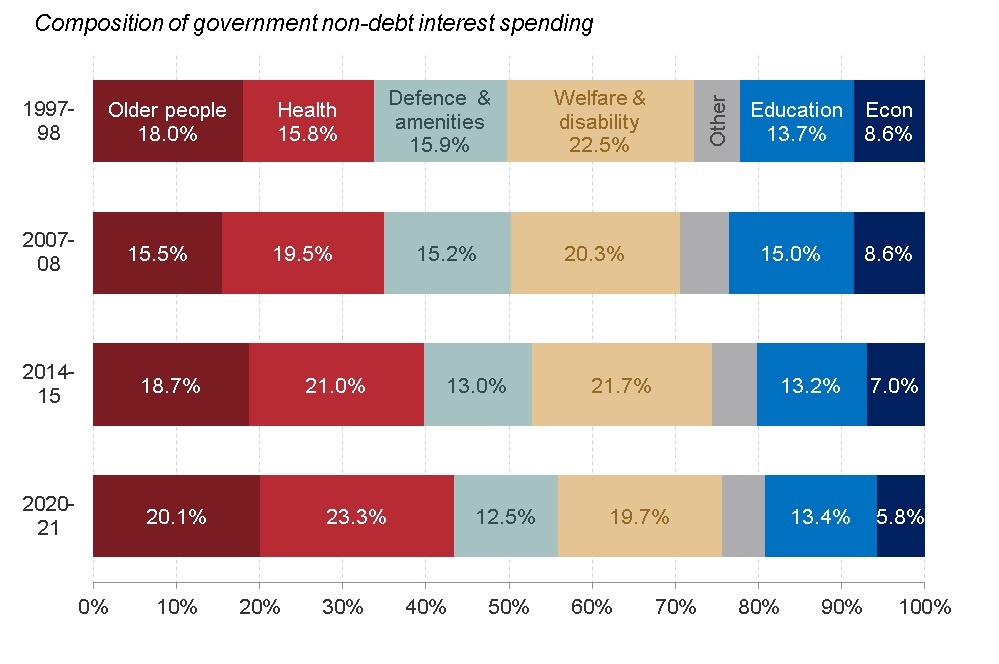10.11.15
Spending profile to shift from education and housing to health and old age
Government spending on old age and health will grow to more than twice the share allocated to education and economic development combined by the end of this Parliament, Resolution Foundation has found today (10 November).
The think tank analysed state spending ahead of the chancellor’s Spending Review on 25 November, identifying that his deficit reduction programme is being achieved largely through spending cuts. Spending as a share of gross domestic product will fall to a historic low of around 36% by the end of the decade, for example.
But while the magnitude of these cuts is given the spotlight, the profile of spending is also changing considerably.
Matt Whittaker, Resolution Foundation’s chief economist, said: “The focus on spending cuts as the driver of deficit reduction, combined with protections for areas such as health and pensioner benefits, has created a big shift in state support towards older people – and away from children and young adults.
“While the focus of the Autumn Statement will largely be on how the pain of spending cuts has been spread around departments – as well as any changes to tax credit reforms – it’s important to step back and consider what the chancellor’s plan means for the long-term role of the state, and the support it provides across different parts of the population.”
A shift towards increased spending on the NHS means that 2019-20 health resource spending (40% of departmental spending) is projected to be two and a half times the size of 15 government departments combined (16%) – including business, justice, work and pensions, local government, the Home Office, culture and transport.
By contrast, the health budget was slightly smaller than these other departments in 2010.
Similarly, the think tank’s analysis identified a growing generational gap in welfare provision, with spending on pensioners set to rise by around 19% while spending on children and working-age adults is projected to drop.
As a result, spending on pensioner benefits will account for over half of all welfare spending by the end of this decade.
This massive shift towards pensioners means that the overall share of state spending on old age and health is set to reach 43% by the end of this Parliament – a rise of around one-quarter since 2007, a new high for the UK.

On the other hand, the share of government spending being sent to education and economic development – including housebuilding – will fall by around one-fifth over the same time period, to around 19%. This is its lowest share since comparable data began in 1977.
So far, the chancellor has already agreed on departmental cuts to the Treasury and the ministries of local government, transport and environment.
The think tank said these cuts – 8% year-on-year – will represent cumulative reductions to departmental spending of over 50% by the end of the next Spending Review period.
The LGA has also recently warned that if a similar sized reduction is applied to core council funding, local authorities will be left to deal with a £16.5bn black hole in their purses until 2020.